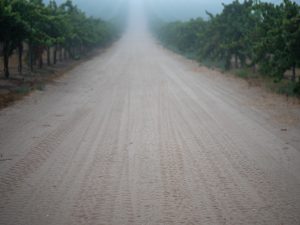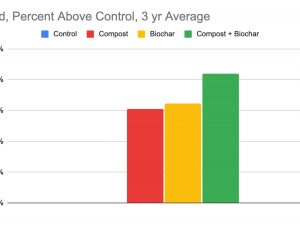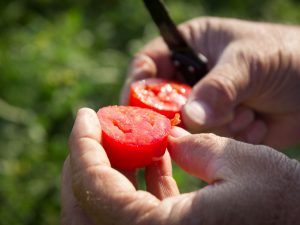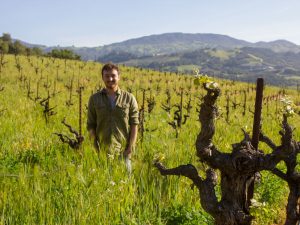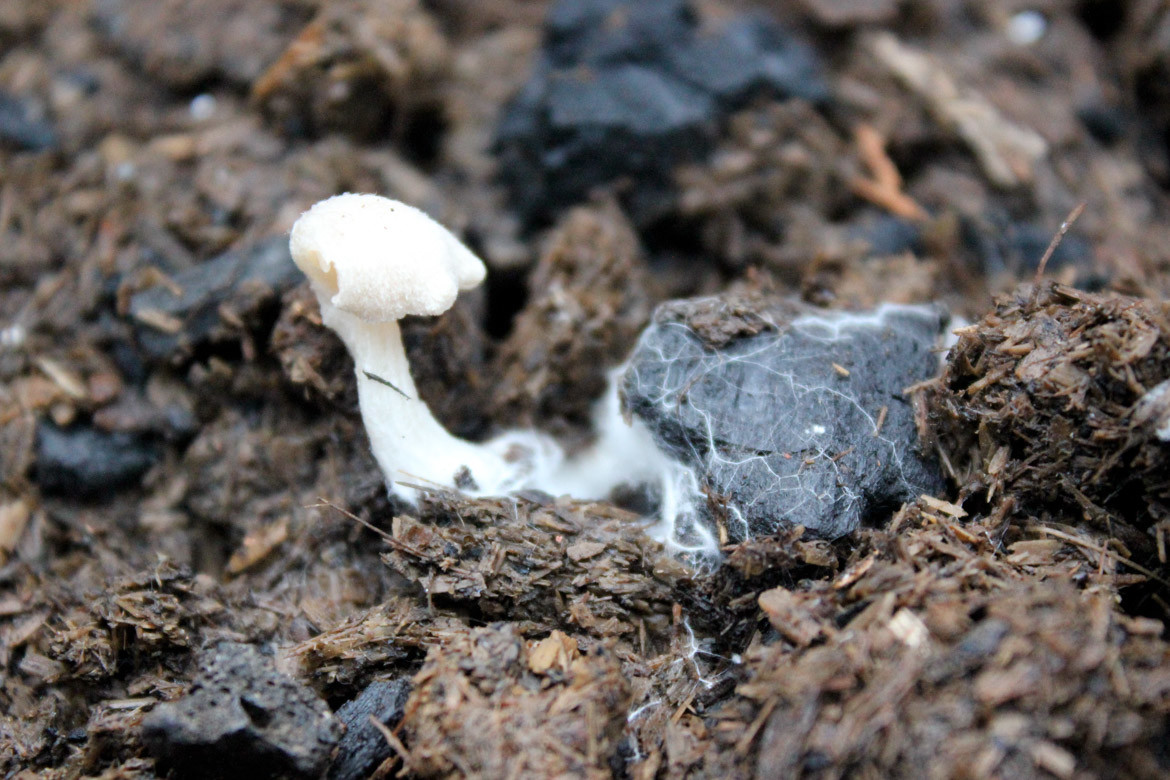
Pyrogenic Organic Matter in Soil (aka biochar)
This is an incredibly boring way to start a dialogue, but bear with me here, you may find these definitions useful.
Pyrogenic Organic Matter: In the common language of the sciences, latin, pyrogenic is made up of the word bases pyro (fire) and genic (created from). Pyrogenic organic matter refers to organic matter created from fire.
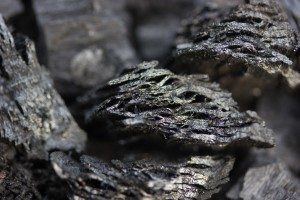 It is not a statement that fire is somehow an organism that can create carbon based bodies, but rather an acknowledgment that fire can transform organic matter into materials that have properties that are very different from their original form. You could say that a new material was birthed in the fire. While the term pyrogenic establishes it’s creation by fire, organic matter establishes that it is organic carbon based (from a once living organism), otherwise it would just be minerals. It is essentially a more accurate way to describe charcoal, and it is also relatively free of pre-conceived ideas.
It is not a statement that fire is somehow an organism that can create carbon based bodies, but rather an acknowledgment that fire can transform organic matter into materials that have properties that are very different from their original form. You could say that a new material was birthed in the fire. While the term pyrogenic establishes it’s creation by fire, organic matter establishes that it is organic carbon based (from a once living organism), otherwise it would just be minerals. It is essentially a more accurate way to describe charcoal, and it is also relatively free of pre-conceived ideas.
Biochar: Biomass charcoal when used or found in soil. (aka charcoal, pyrogenic organic matter)
This whole biochar thing is pretty new, right?
As long as fire and plant life have co-existed, pyrogenic organic matter (charcoal) has played a role in the development and fertility of topsoil. With thanks to some scientific sleuthing, we can pin that down to about 400 some odd million years ago, in the Paleaozoic period (Heike Knicker, 2011). This is when terrestrial plant life had sufficiently oxygenated the atmosphere to the point where “wildfires†began to happen. These fires deposited charcoal on the soil, which was unearthed many years later by inquisitive types who unveiled it’s mysteries using scientific method.
There is a really good peer-reviewed scientific research article by Heike Knicker that offers an opportunity to learn more about the history and context of pyrogenic soil organic matter. You will find a link in the bibliography when you’ve reached the bottom.
Does soil organic matter matter?
“The presence of [soil organic matter] SOM is regarded as being critical for soil function and soil quality.[2]â€, it says on the Wikipedia description of Soil Organic Matter, citing Beare et al. 1994. On that same page two mentions of charcoal can be found:
1.) In mentioning sources of Soil Organic Matter:
- “Additional sources of soil organic matter include plant root exudates[9] and charcoal.[10]
2.) In describing Plant Residues:
- “Charcoal is elemental carbon derived from incomplete combustion of organic matter. Charcoal is resistant to decomposition.â€
Using Wikipedia as a proxy for general awareness, it appears that there is at least an acknowledgment of charcoal as a piece of the soil organic matter puzzle, and that there is a clear awareness that the SOM puzzle is “critical for soil function and soil qualityâ€. While seafood does fill some of our diet, the rest of our food ultimately comes from soil. It doesn’t seem too far of a stretch to say that soil organic matter is critical to humanity’s food supply. Yet common farming and gardening practice in modern America is seemingly devoid of the intentional use of pyrogenic organic matter in managing soil organic matter.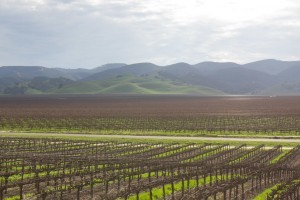
Into this gap came the word biochar. Biochar fills the void between the general lack of intentional use of pyrogenic organic matter and soil life’s affinity for it (and some interesting climate change implications too). And apparently that void must have had quite a vacuum to it, since the term biochar popped onto the scene several years ago, there has been an explosion of research and literary work devoted to it. Some 4,000 research articles to date.
What’s in a name?
We could have called our company Pacific Pyrogenic Organic Matter for Soil, or Pacific Charcoal for Soil, but we are Pacific Biochar. It is just a made up word – biochar – but it is pretty useful, even with all the preconceived ideas and misinformation surrounding it. Pyrogenic Organic Matter in Soil is quite a mouthful. Charcoal usually brings to mind a BBQ. Agri-char was an interesting option for a while, but according to an unconfirmed anecdote, that word was already a registered trademark, but “biochar†was still open.
We at Pacific Biochar feel that yes, soil organic matter does matter. And we feel that pyrogenic organic matter deserves a respectable seat at the SOM table, by whatever name we decide to call it. It deserves our embrace, our intentional incorporation in soil health management. We will continue to refer to our products as biochar, but in our efforts to help this material gain it’s acceptance as something with a very long history, and a critical role in our future, you may hear us use the term Pyrogenic Organic Matter in Soil a bit more.
I hope you will enjoy the wide range of information and product options offered here for an incredibly old material with a relatively new name, biochar.
Thank you for taking part.
– Josiah Hunt
CEO| Pacific Biochar Benefit Corporation
Bibliography:
1.) Heike Knicker (2011). Pyrogenic organic matter in soil: Its origin and occurrence, its chemistry and survival in soil environments. . Available online 12 March 2011.
2.) Beare, M. H.; Hendrix, P. F.; Cabrera, M. L.; Coleman, D. C. (1994). “Aggregate-Protected and Unprotected Organic Matter Pools in Conventional- and No-Tillage Soils” (PDF). Soil Science Society of America Journal. Free PDF download. 58 (3): 787. doi:10.2136/sssaj1994.03615995005800030021x. Retrieved 13 July 2016.

